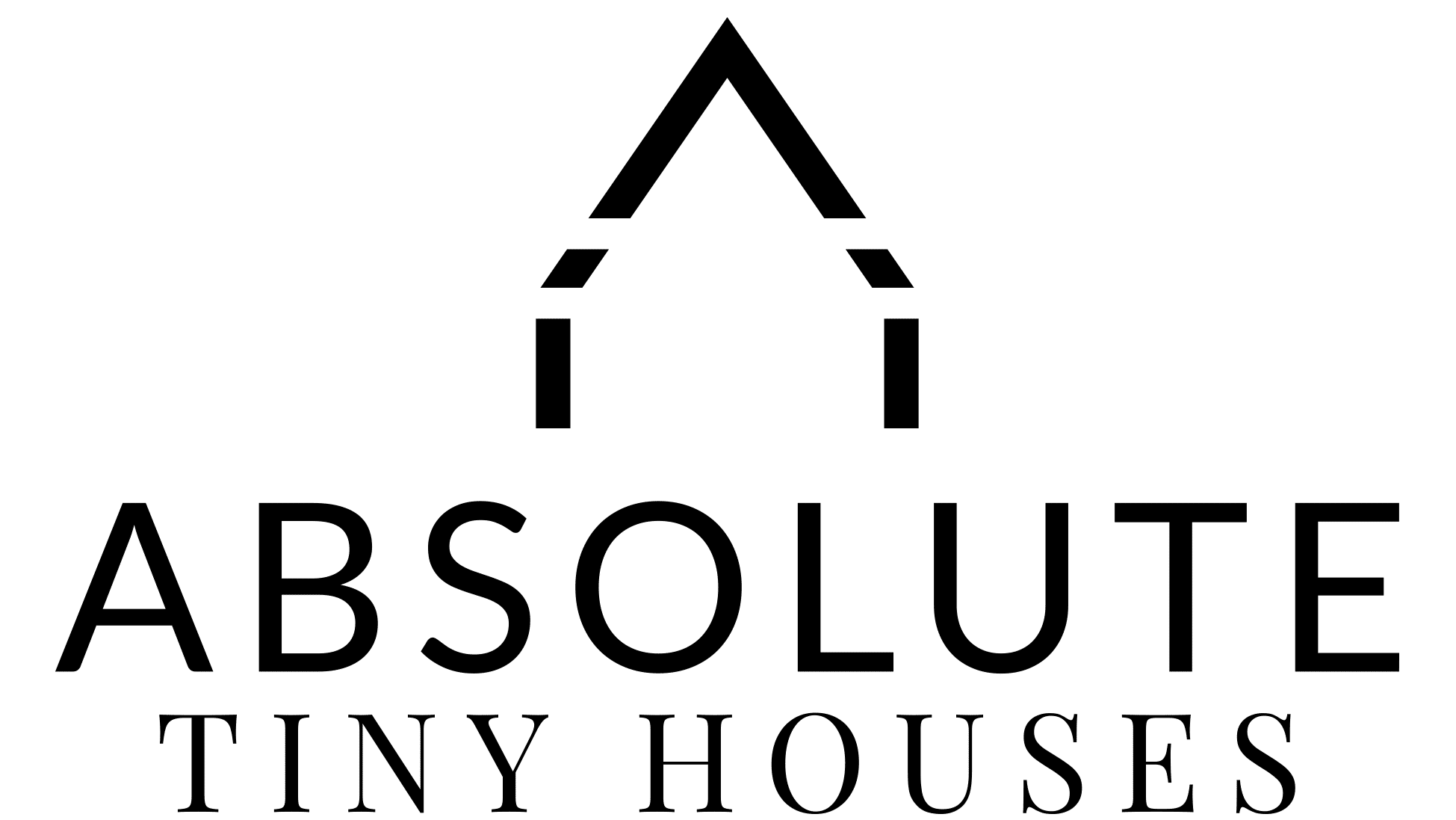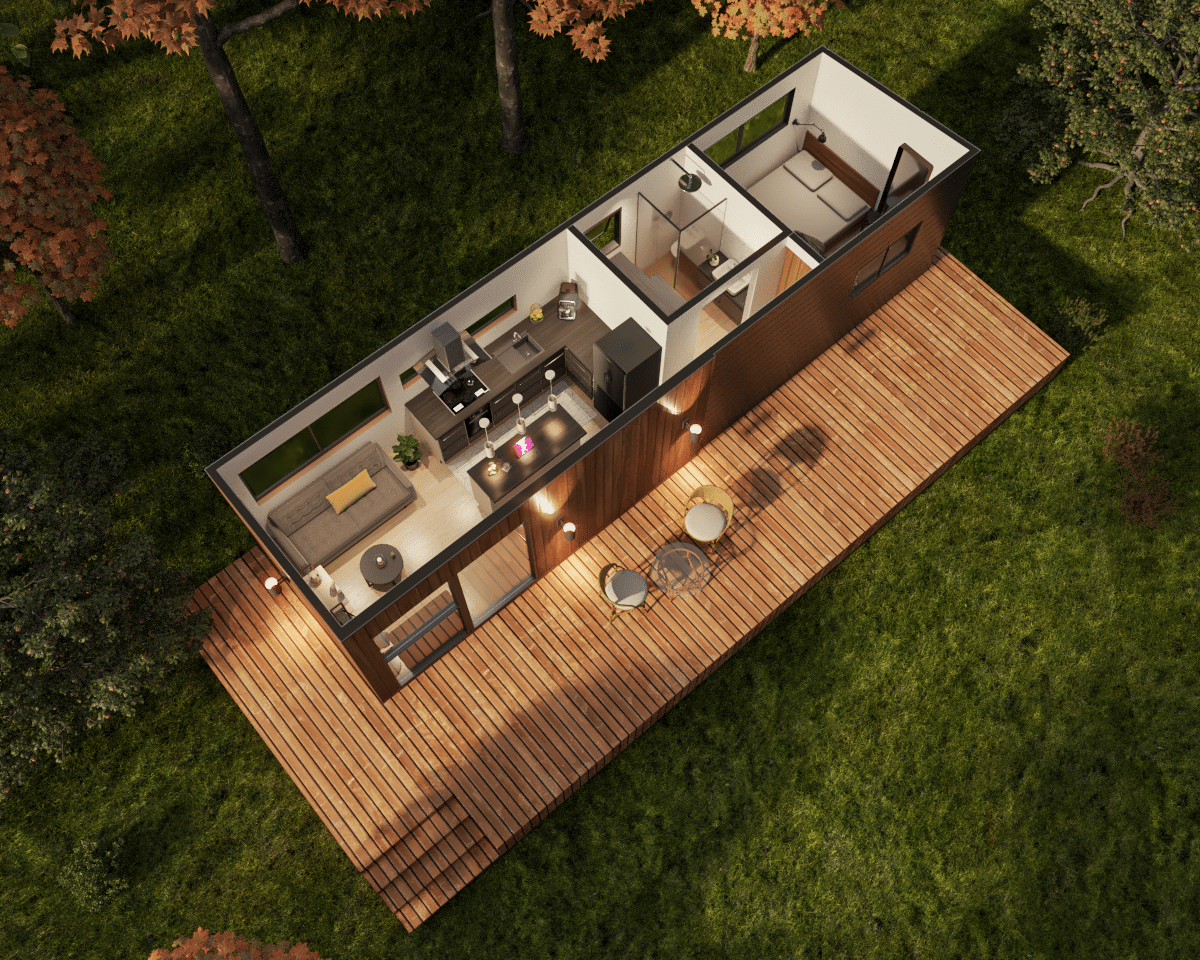Do Tiny homes hold their value is a complex question. A question that is often answered affirmatively through rose coloured glasses by the marketing team of builders and vendors who wish to sell you their tiny homes.
The truth is some tiny homes do hold their value and some don’t. There are many contributing reasons as to why. In this post we aim to help you understand your tiny home resale potential and what influences it for each of the following tiny home options:
- consented tiny home
- approved under the building code
- built to code falling under the building code exceptions
- portable tiny home (on skids or screw fittings)
- tiny home built on wheels (a registered trailer with a NZ Transport Warrant of Fitness)
After all, the last thing we want is to give you misinformation.
First, we must look at your motivation for buying.
Why do we buy real estate; a comparison between traditional homes and tiny homes?
Traditional homes are purchased for the following reasons:
- Owner occupied, focused on lifestyle drivers:
- To live in
- Possible capital gains
- Both of the above
- Investment income, focused on economic drivers to gain:
- Rental income
- Capital gains, or
- Both of the above
In NZ, the 2023 census data revealed that 66% of properties are owner occupied. In the larger cities this percentage was lower. Presumably the higher city property prices influenced this. This results in a rental shortage that many New Zealander’s are experiencing. Affordable living is hard to find.
Tiny homes are purchased for the following reasons:
- For affordable living
- A way to break out of the rental cycle
- As Granny flats and sleepouts for friends and family
- Extra income and air B&Bs
In our experience, the majority of our customers purchased their tiny homes to live in. Traditional homes are out of their reach. Now let’s unpack whether tiny homes hold their value and what influences their resale value?
Are Tiny Houses a Good Investment?
Before answering that question, let’s ensure that we are on the same page. We need to define the following terms:
- value
- resale value
- good investment
Defining “Value” in a Tiny Living Context
Generally, when we (Absolutely Tiny Homes) talk about value, it is from the perspective of the builder and providing value for money for your build. Not just at point of purchase when compared to other tiny homes, our homes are built to last.
For a tiny home buyer, we understand that it is a personal decision and evaluation process that will determine which tiny home they think gives the value that meets their needs, budget and expectations.
Defining “Resale value” in a Tiny Living Context
Generally speaking, when the real estate market talks about “resale value” they are referring to the price a property will obtain when sold at a future point in time. The same definition applies to tiny homes.
Defining “Good investment” in a Tiny Living Context
When the real estate market talks about a “Good Investment” there are a number of situations that are defined as a good investment.
In the context of this post with our focus on resale value, an investment should appreciate in value over time, simply the monetary value of the property should increase.
We are not dismissing a good investment could also be when the property is able to reach an appropriate rental return based on the initial investment, loan repayments, interest levels and other related on-going costs.
What Determines the Value of a Traditional House?
The following factors will influence the value of a traditional house:
- Location
- Property size and layout
- Condition and age
- Amenities Number of bathroom, car parks, swimming pool etc
- Market conditions, supply and demand, a rising market or falling market, repayment requirements, interest rates and other holding costs
- Comparable sales, recent sales of similar properties
- Legal issues and constraints
Let’s look at the above with consideration to a tiny home.
Traditional home Influences | Consented Tiny Home Influences | Portable Tiny Homes Influences | Tiny Home on Wheels Influences |
Location | Yes | No land value | No land value |
Property (Land) Size | Yes | NA | NA |
House Size | Up to 30 Sq metres* | 30 Sq metres** | 30 Sq metres** |
Condition and Age | Yes | Yes | Yes |
Amenities | Yes | Yes | Yes |
Market Conditions | Yes | Yes | Yes |
Comparable Sales | Yes | No Central Data Source | NZ Transport limited data |
Legal Issues | If any | If any | If any |
Notes:
* Allowable size under the current code. There are indications that in early 2026 the code will be updated to allow for a possible 70 Sq metres.
** Could go larger if road transport permits are obtained (Truck and Hiab crane)
Do Consented Tiny Homes hold their value
Consented tiny homes have the advantage of coming with a land section. Each section comes with the often-conservative Government Rating Valuation. In the worst-case scenario your tiny house (and land) is valued at the Government Rating Valuation. You also have the opportunity to base your resale asking price on recent sales of comparable property prices. From there the resale price will be the result of the asking price you put on your property allowing for the negotiation process.
An alternative scenario, traditional homes often add a smaller dwelling, a Tiny home, to their property to meet their lifestyle needs. Most believe that this addition to their property is a good investment that will boost their property value.
The value of the Tiny Home on land is influenced significantly by the property location and the cycles of the market. The larger forces that are at play determine if it is an appreciating market with rising property prices (a sellers market) or depreciating market (a buyers market).
Finally, comparable local sales and property conditions will determine wherein the market your property value sits.
Do Portable Tiny Homes hold their value
To start with, a Portable Tiny Homes value begins with size, amenities, condition and age. Portability is an advantage or disadvantage, regardless of whether it was mounted on skids or screw piles. The buyer will need a truck with a hi-ab (mini crane) to move it. This needs to be factored into the buyer’s budget. The seller may need to factor that in reinstating the ground where the tiny home sat.
The portable tiny home’s value is independent of location and the impacts that a location has on potential resale value. A quality build in good condition will obtain more than a shoddy build in poor condition. From there it depends on how many second-hand tiny homes are available for sale and if your tiny home meets the needs of the buyer.
Do Tiny Homes on Wheels hold their value
To start with, a Tiny Homes on Wheels’ value begins with size, amenities, condition and age. Again, it is an advantage and a disadvantage that it is a tiny home on wheels. It is an advantage, providing you have a car or 4WD suitable to tow your tiny home it is easier to relocate than the above portable tiny home. No truck or crane required.
The disadvantage is that by definition a tiny house on wheels is a vehicle. Technically, it is subject to the vehicle appreciation schedule. The closest trend to go by is the caravan market that tends to slowly depreciate over time. Not as fast as cars, however they do for the most part depreciate.
Looking overseas to countries with larger and more mature tiny home markets, you can see that they have an active second-hand Tiny Homes on Wheels market where it is much easier to understand where their tiny home on wheels’ value sits in that and what its potential resale value is.
New Zealand is a long way off having such a mature market.
A unique New Zealand feature, and a strong pro for the Tiny House on Wheels is the ability to obtain Certified Self Containment Certificate. This is pretty cool as it says you can be entirely off grid. Furthermore, the value of the systems you have in place are further recognised by the buyer, solar panels, inverters and good power capacity are well sought after.
Ultimately to have a resale value you need a buyer. A quality build in good condition will obtain more than a shoddy build in poor condition. From there it depends on how many second-hand tiny homes on wheels are available for sale and if your tiny home meets the needs of the buyer. You may find them in TradeMe or Market Place and search Certified Self Containment Certificate.
Having said that, it is not common for people to obtain the Certified Self Containment Certificate in the Tiny Home Market. However, here’s a link to a recent case study where the Tiny Home Owner has a Certified Self Containment Certificate and how it helped her.
The ultimate tiny home resale value influences
New Zealand’s growing Tiny Home Market has a shortage of second-hand tiny homes. Consequently, the influences are the ‘Golden Three’:
- Supply and Demand
- A Quality Build
- Timing
Supply and Demand
Supply and demand are necessary, for without them there is no buyer’s market. An online search for second hand tiny homes (at the time of publishing) reveals very few tiny homes are available. Places we looked include but were not limited to:
- TradeMe.
- Face Book Market Place.
- Local Facebook groups (Search for ‘Tiny House Buy / Sell’).
A Quality build
A quality build is determined by:
- structural integrity,
- use of durable materials,
- meticulous attention to detail.
- efficiency and fit for purpose
At Absolute Tiny Houses, Michael (Perfectionist Mike) and the team’s tiny homes are built to last using BRANZ Approved building materials. We deliver beautiful luxury homes that utilise high quality fittings and hardware with the most appropriate systems for your house.
Mike is the ultimate perfectionist. He takes pride in our houses at every step of the way.
Timing is everything
With limited second tiny homes on the market, both buyers and sellers need patience, a little time and the ability to recognise a good opportunity. There are so few opportunities for quality second hand tiny homes on the market. Typically, this would make it a sellers’ market being able to ask for more. However, with so few to compare it is hard to work out what price to put on your tiny home.
For buyers, do your research, know what you want and have a budget for what you want to change. Be ready to act. Simply because if it is a quality build in good condition it will not be on the market for long.
A changing market
Based on the last few years, the Tiny Home Market is growing. It is here to stay. While there is a shortage of affordable housing the tiny home industry will continue to grow. Unfortunately, there is no quick fix for such a large and complex socio-economic problem. Tiny homes have evolved as part of the solution. Furthermore, people now living tiny are embracing the lifestyle with reduced financial pressure. Others are catching on. And hence the industry continues to grow.
With more and more new tiny homes on the market, it is our prediction that there will be more second-hand tiny homes becoming available for sale. Firstly, as mentioned above, a search for second hand tiny homes will reveal very few on the market. If you see a well built one grab it quickly as it won’t be on the market for long. A quality build will last and hold its value over a shoddy build. Secondly, an older well-built tiny home is more likely to be more affordable to style and make your own over buying a new tiny home.
Finally, the recent trend of modern luxury tiny homes is that they have a lot more built-in value than the earlier years of tiny home living making it harder to compare a modern tiny home to an older build. At the risk of repeating myself one too many times, buying a quality older build to do up may be the right way to go for you and ultimately the best value for money.
Are tiny homes worth it
Tiny home resale value and resale potential is only one reason to look at value. While significantly important to understand and go in with your eyes wide open the true value lies in how your tiny home enables you to live a better life. If we look at the question of value from that perspective, regardless of whether you buy new or second hand, our clients tell us based on their Tiny Home Journey that they are worth it.
Wrapping it up, what is your tiny home resale potential
In our view a;
- portable tiny house, a quality build and in good condition will hold its value compared to a poorly built one. However, in today’s market its resale value is unlikely to be higher than its purchase price.
- tiny house on wheels, like the portable home, a quality build in good condition will hold its value compared to a poorly built home. However, by definition a tiny house on wheels is a vehicle. The closest trend to compare to are caravans that tend to slowly depreciate over time. Not as fast as cars. They do for the main depreciate. Some do get higher prices than their purchase price as they value add with extras e.g. solar panels, inverters etc and obtain a genuine Certified Self Containment Certificate. Ever if they never travel.
- consented tiny home on land value will be influenced significantly more by location and general real estate market conditions, comparable sales and the like. Thus, making it subject to an appreciating or depreciating market.
All are influenced by timing. Availability meets needs. From a seller’s viewpoint, if the time is right and the build is quality, you just may get the resale value you are seeking.
FAQs
It is a complex question with many constantly changing influences.
Even though NZ is experiencing a strong growth in the Tiny Home Market, it has a shortage of second-hand tiny homes. The strong growth has not seen an influx of second-hand Tiny Homes for sale.
Supply and demand will strongly influence the price. However, buyers outweigh sellers. You would think this would lead to higher prices, right? Not so.
Quality builds and value for money. When comparing a build of say 10 years ago and a more recent build, the more recent build is tending towards the luxury tiny home market build so the older builds tend to appear to be more basic.
Timing will influence price. There must be a buyer who wants your home.
Traditional builds are more strongly influenced by the value of the land and the rising and falling market.
The honest not so simple answer, in most cases, is tiny homes do not appreciate like traditional homes.
The resale value of a tiny home is affected by the Golden Three Influences
- Supply and Demand
- A Quality Build
- Timing
Yes you can. In many cases, being on wheels is an advantage, as you know that its base is designed for towing. Considerations include:
- Is the trailer road worthy?
- Does it have a current NZ Warrant Of Fitness (WOF)?
- Does the Tiny house weight comply with the towing limits?
If the Tiny Home exceeds towing limits and / or the trailer can’t obtain a NZ WOF then the tiny home on its trailer, can be hoisted on to a flat-bed truck and moved. It is designed for it.
Unfortunately, it is hard to find this information as many tiny home sales are not recorded in the traditional methods of a house and land sale. There will be some information regarding tiny homes with land, however it is hard to compare price-wise as this represents a very small part of the market.
There are three key things that will support maximising the value of your tiny home:
- Look after your tiny home. Maintain your home, its’ systems and any on-going needs.
- Ensure your tiny home is functional. Make smart use of the space and how you use your home. Efficient design and smart use of space becomes a strong selling point.
- Show your style, even though it may not be exactly the style someone else if looking for, it shows how you can truly personalise a space and make it your own.




